
Photo Spots Recommended Social Media Spots
Recommended Spots
Ehime Prefecture
Ehime Prefecture: The Starting Point for Your Travels.
Ehime Prefecture is connected to the Shimanami Sea Route, which has become the preeminent cycling course in Japan, and it is fully equipped with services for receiving cyclists from in and outside the country. For instance, beginning in 2016 Matsuyama Airport, the entrance to the prefecture by air, began to offer free handling of bike boxes for those transporting their bikes by airplane. There is also a cycling station set up in front of the tourist bus station at the east end of the airport terminal and there are always bike stands and pumps available. There is also a complete array of services with consideration from the cyclist’s point of view, such as tool lending and changing rooms shared with pilgrims. Additionally, Ehime Prefecture also features a great many facilities throughout the prefecture that are excellent for cyclists such as bike stands at lodgings and restaurants. This is a starting point fully suited for the 1,000 km trip around Shikoku.
Itoyama Park Overlook
The Itoyama Park overlook affords a view over the Shimanami Sea Route which connects Imabari in Shikoku and Onomichi in Honshu. Enjoy the scenery of the Seto Inland Sea while feeling the salty sea breeze as you cross the Kurushima Kaikyo Bridge by bike. Right below the overlook is the Sunrise Itoyama cycling terminal where you can find a variety of services such as lodgings, rental bikes, and tool and pump rentals. There is also the southern tip area of the Shimanami Sea Route, the preeminent cycling course in Japan, which one can ride around comfortably.
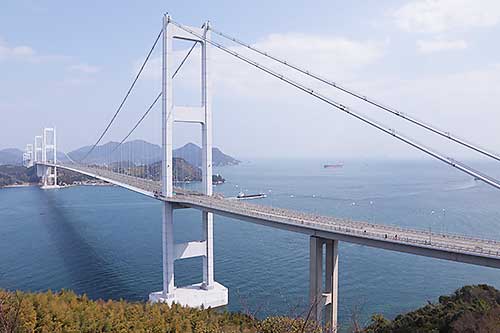 Kurushima Kaikyo Bridge
Kurushima Kaikyo Bridge 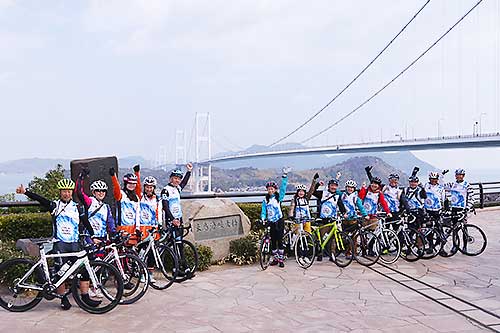
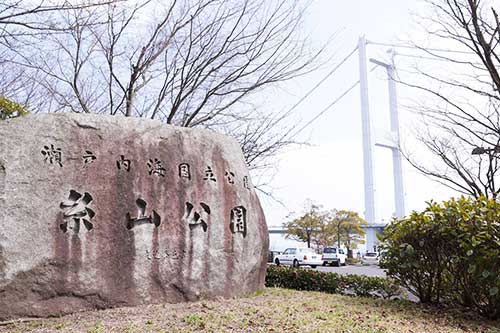
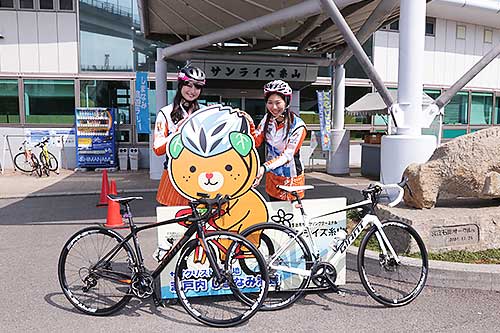 Commemorative photo in front of Sunrise Itoyama
Commemorative photo in front of Sunrise Itoyama
Imabari Castle
Built by Takatora Todo in Imabari, this is a castle that makes good use of the sea. It is also called Fukiage Castle. It is right beside the sea and its vast moat draws in sea water. Due to these characteristics, it is counted as one of the three castles on the sea in Japan. Thirty minutes after the sun sets, it is lit up until 11pm and you can see its fantastical shape rise up three-dimensionally.
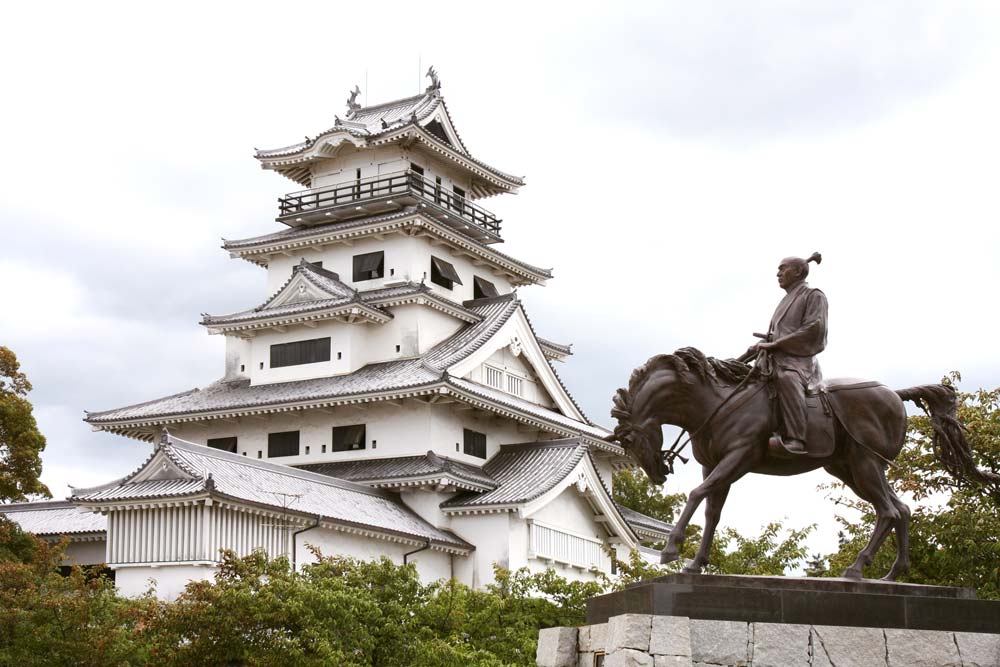

Texport Imabari
One of Imabari’s specialties is the Imabari towel, which has a history of over 120 years. Texport Imabari is a composite facility where visitors can come into contact with these Imabari towels.
At the Imabari Towel LAB, visitors can experience the ‘five-second rule’ test where they can see the level of absorption as well as towel folding. After that, you can enjoy shopping in the Imabari Towel store and café.
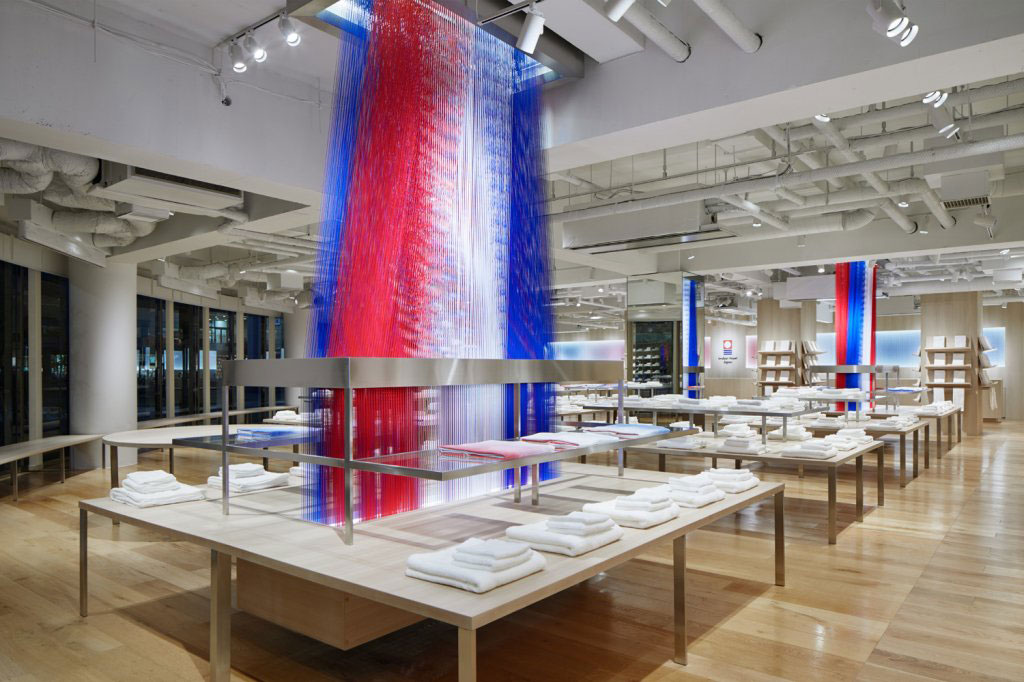

Matsuyama Castle
Matsuyama Castle is located in the center of Matsuyama City. It is one of the 12 keeps that still exists from the Edo era. It is 161m high on its highest floor and gives a panoramic view of the town of Matsuyama. There is a walking route to the summit but you can also use the cable car or the lift to get there. Shiroyama Park at the foot of the mountain is also known as a place to see cherry blossoms and various events are held there.
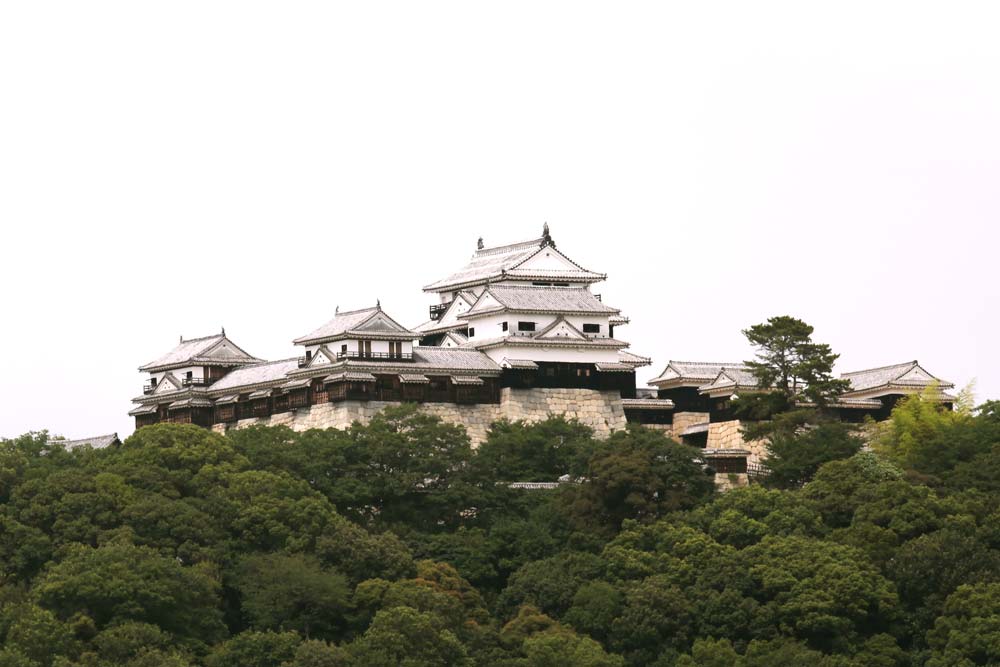
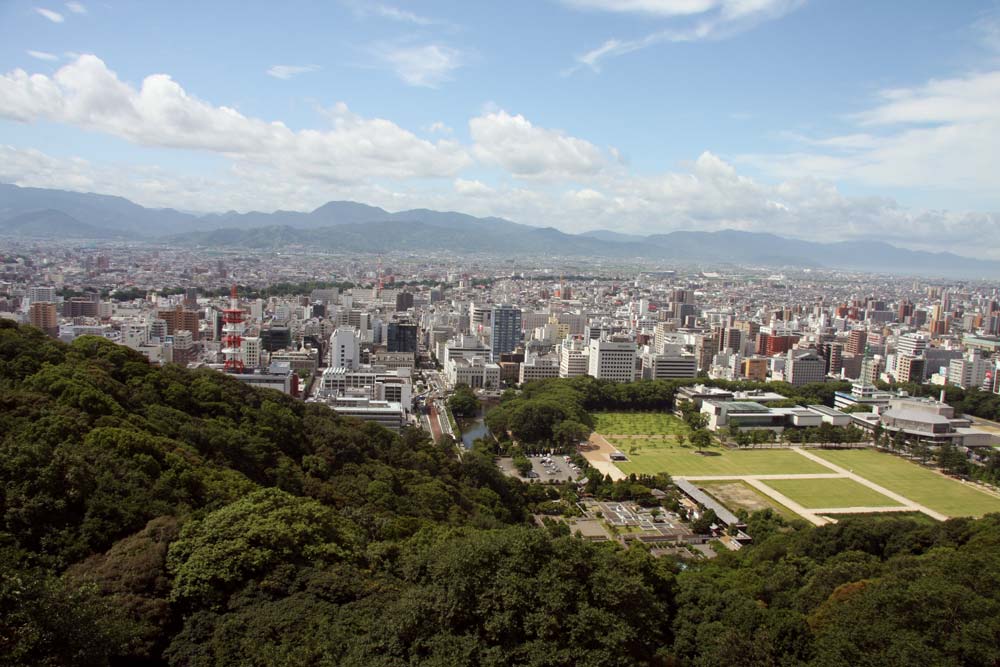
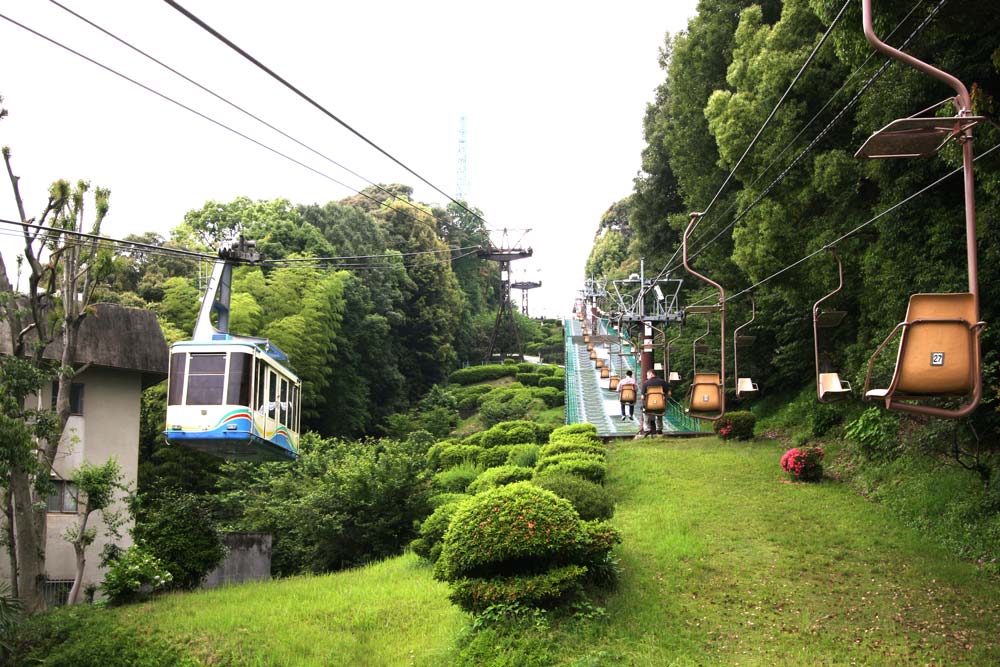
Dogo Onsen
If you want to relax from the fatigue of your travels, there’s no better way than going to an onsen. The Dogo Onsen is one of the Three Ancient Springs of Japan and was also depicted by Natsume Soseki in his well-known novel, Botchan. The “Botchan Automaton Clock,” which has become a new attraction for the Dogo Onsen, features characters that appear once an hour and the site is bustling with people who aim to come at one of these times. Right in front of the Dogo Onsen Main Building, where tourists stroll leisurely in yukata, is the perfect place for a commemorative photo.
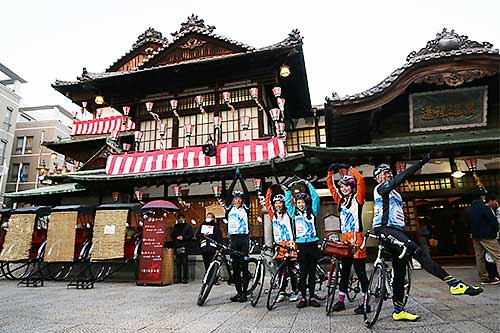
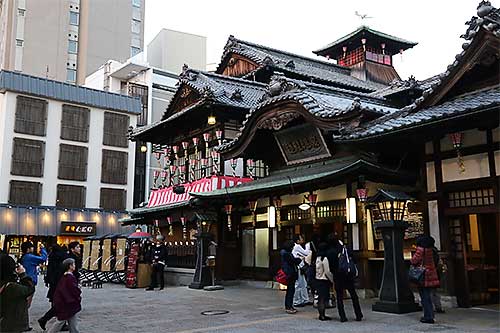
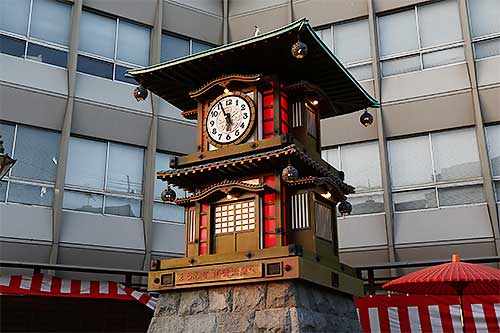 Automaton clock in front of the Dogo Onsen Station
Automaton clock in front of the Dogo Onsen Station 
Shimonada Station - Nagahama, Ozu City
The Yuyake Koyake Line on the Iyonada-Sadamisaki Setokaze Sea Route is a course that all cyclists will want to ride at least once. Here you can enjoy the beautiful blue of quiet Iyonada and the seasonal flowers that bloom along the route. There are relatively few hills and the road is marked with a blue line so that even beginners can enjoy their ride. The gentle curves that sometimes appear are ideal spots for pictures. If you take a picture in matching cycling wear, the sea will be in the background and it will be perfectly picturesque. Yuyake in Japanese means the afterglow of the sunset and the setting sun is a fantastic sight to see so try to ride towards evening.
 Easy to ride as there is a blue line marked on the road
Easy to ride as there is a blue line marked on the road

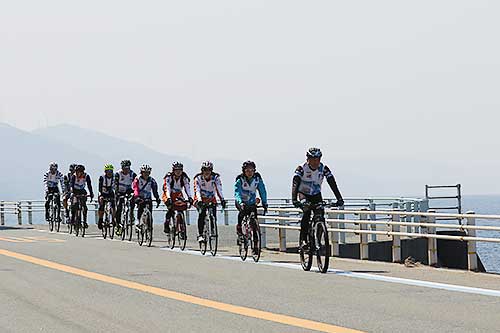
Shimonada Station
Shimonada Station is located in on the Yuyake Koyake Line on the Iyonada/Sadamisaki Setokaze Sea Route in the west of Ehime Prefecture.
If you go through the station building, you will see the horizon stretch out before you. The combination of the quiet sea and the railroad line make for scenery heavy with emotion and the view is particularly superb in the evening. It is also famous as a filming location for several works and we recommend relaxing and looking out to sea. If you are there are the right time, you can also see the adorable train arriving and departing from the station.
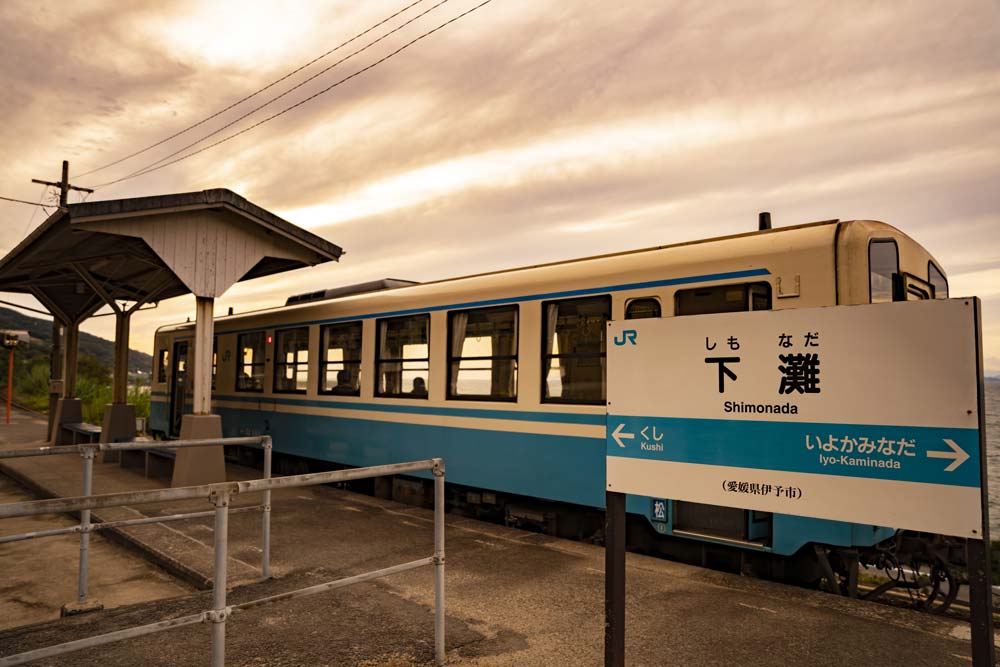

Straw Mammoth
In the middle of the route between Yawatahama and Seiyo Cities, a mammoth suddenly appears in a field. These parent and child mammoths made of straw are fairly large and can be seen from the road. Each year on 29th April, the Lotus Flower Festival is held here and there are various events including rice cake pounding and mud soccer.
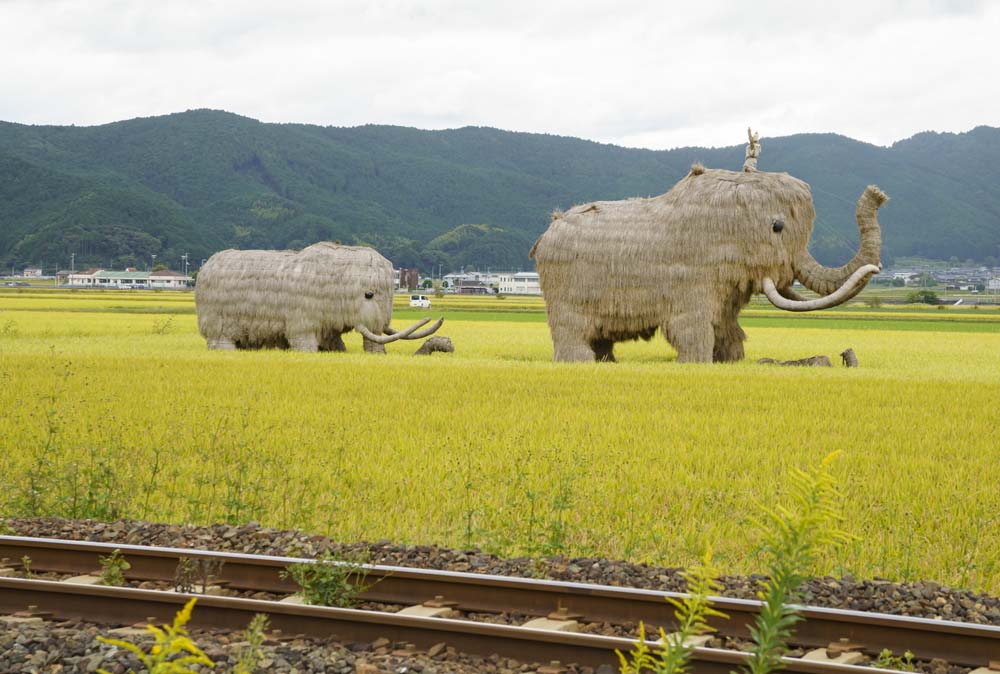
Nanyo Cycling Oasis
Beside the Mima roadside station in Uwajima City is the Nanyo Cycling Oasis where you can rent everything from city bikes to cross bikes and road bikes. The local roads have a blue line drawn on them so that one can ride worry free.

Retro Red Bridge: Nagahama Bridge
The can’t miss spot in Ozu City is the Nagahama Bridge, also known simply as the Red Bridge. It is the oldest fold-up type movable road bridge in existence in Japan. When it was built, the bridge opened and closed every time a ship passed through to transport lumber cut from the mountain areas, but now it only opens and closes for inspections and tourism. The nostalgic design accented by rivets and the somewhat austere red coloring are fantastic.
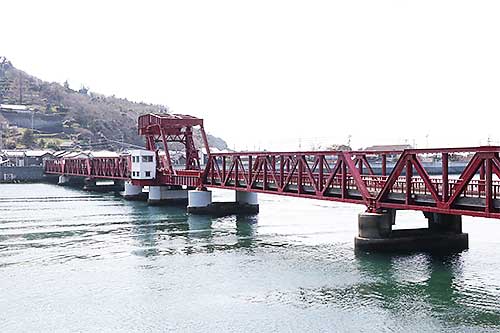

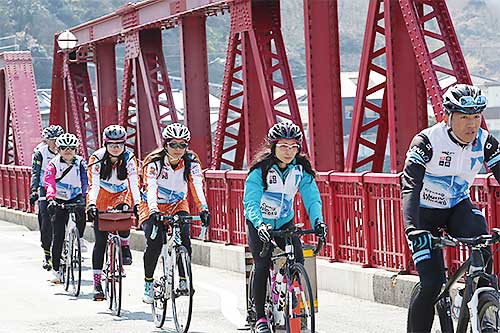
The Old Streets of Uchiko
When you go slightly away from the 1,000km route around Shikoku and follow the Hijikawa River south to Uchiko Village, you’ll find a world of nostalgic old streets spread out before you. The Uchikoza Theatre, built in the Taisho period, is still in operation and serves to transmit artistic culture both in and outside the village. The village streets are lined with townhouses and the residences of local merchants built between the Edo and Meiji periods and it’s nice to get off your bike and take a walk around. It’s quite calming to be called out to by the elementary school students returning home from school.
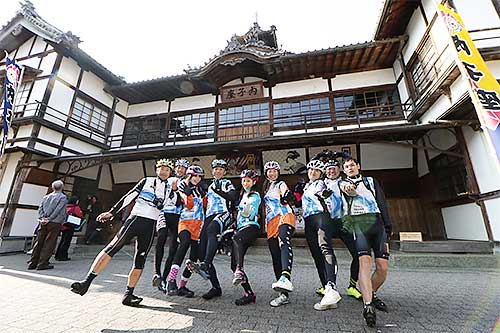 Uchikoza
Uchikoza 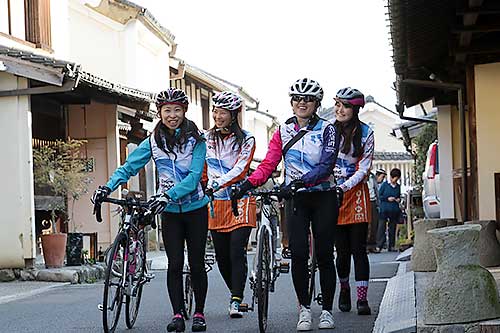 Nostalgic streets
Nostalgic streets 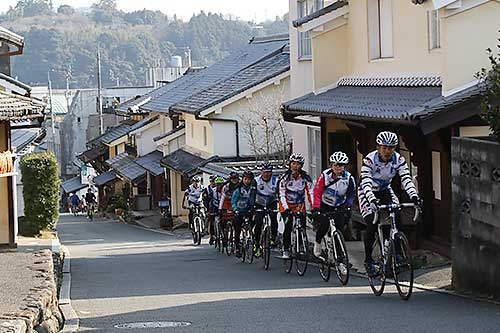
Uchiko Fresh Park KaRaRi Roadside Station
Restaurant KaRaRi serves all you can eat appetizers and volumes of food set to satisfy the stomach of a cyclist who has been riding hard. KaRaRi bread from the KaRaRi Workshop is bought by many people both in and outside the town. It has an exquisite springy texture and a smell of gently spread butter.
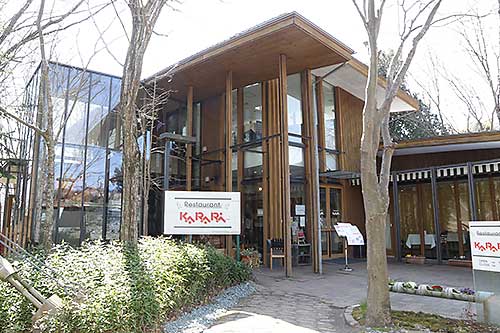 Restaurant KaRaRi
Restaurant KaRaRi  KaRaRi Bread from the KaRaRi Workshop
KaRaRi Bread from the KaRaRi Workshop 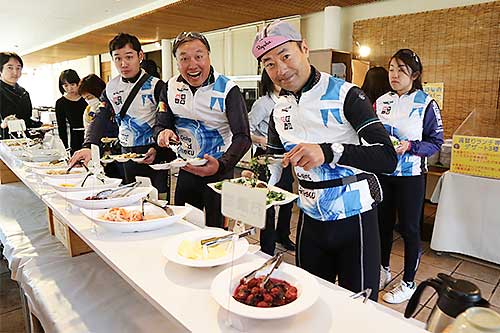
Uwajima Castle
Located on the hill in the center of Uwajima City.
Built by Takatoro Todo, the keep that still stands today has been designated as a nationally important cultural property and the Noboritachimon Gate to the south is designated as a cultural property designated by the city. Visitors can walk up to the keep and there is a panoramic view of the Uwajima coast from the top.
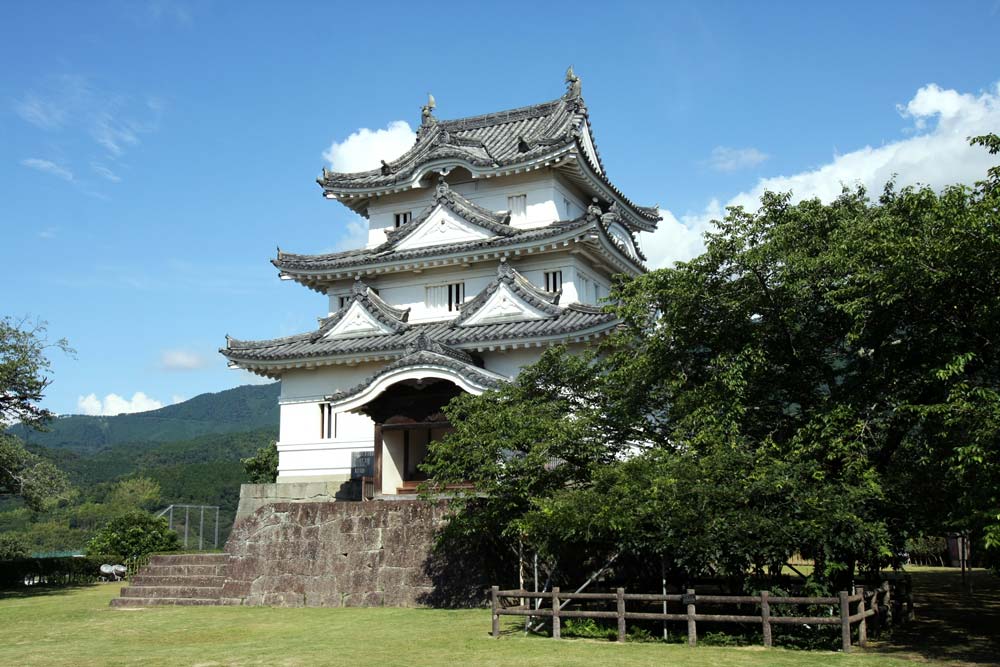

Nanrakuen
This is the largest Japanese garden in Shikoku where visitors can enjoy the natural scenery of the four seasons. It has been selected as one of the 100 best urban parks in Japan. Focusing on the upper and lower ponds, the scenery is created with the themes of mountain, village, town and sea and the vast but orderly park has a quiet beauty. There are many places to take a rest and enjoy a meal or shopping, too.
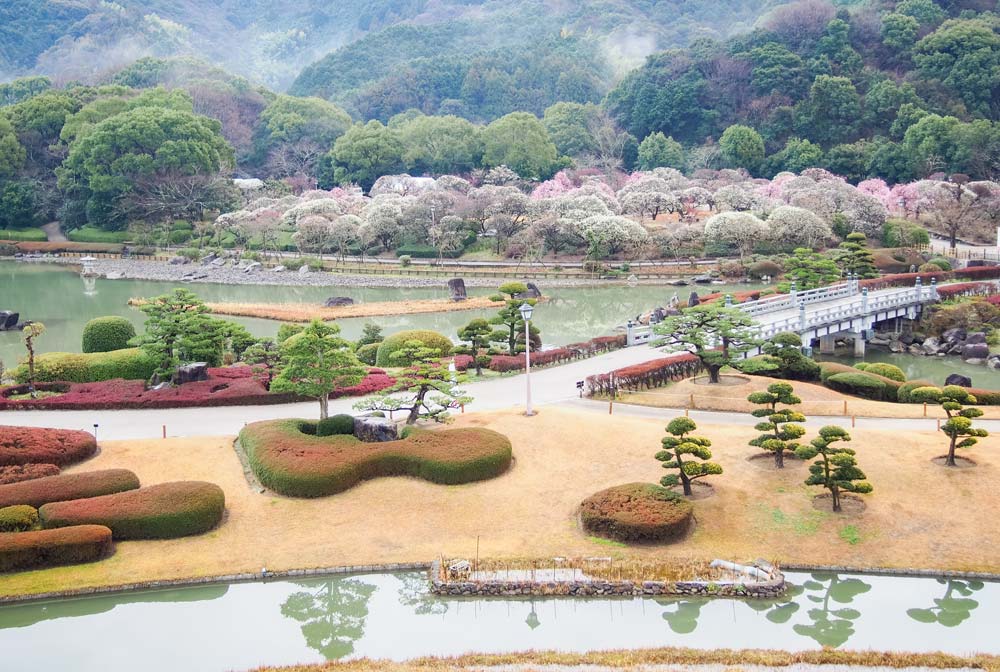
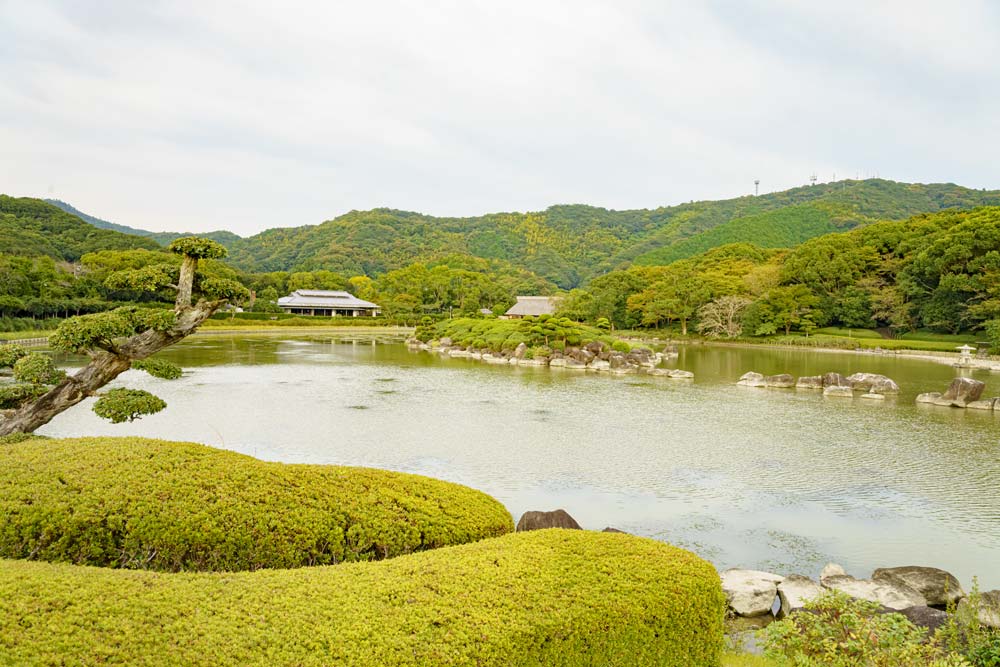

Promoting the “All-Ehime Bike Route Plan” and Aiming for a Cyclist’s Paradise!
To the south Ehime Prefecture faces the Uwa Sea with a rias coastline and to the north it faces the calm Seto Inland Sea, while the prefecture is also bordered by Cape Sada, the longest peninsula in Japan. The Toyo and Chuyo areas situated on the northern side feature the Dogo Onsen, the oldest onsen in Japan, and the Shimanami Sea Route, which connects Shikoku to Honshu. In the Nanyo area lie Uwa, Ozu, and Uchiko with their old, nostalgic streets. There is a great number of interesting tourist sites with the atmosphere different in each area. The prefecture has cooperated with the towns and villages to establish 26 cycling courses, including the Shimanami Sea Route, a sacred area for cyclists, based on the “All-Ehime Bike Route Plan” and the prefecture has also arranged for blue lines on roads, course information boards, and habit changing signs, establishing a safe and pleasant cycling environment.
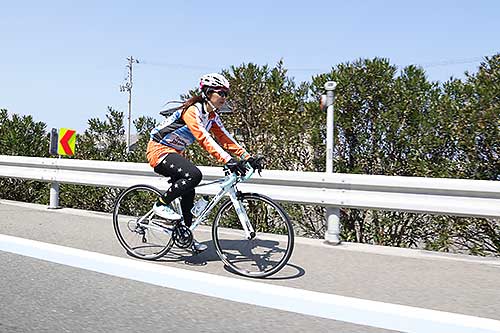

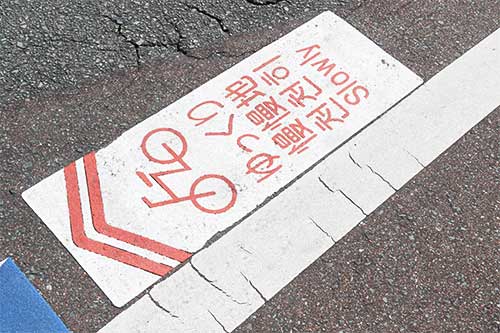






 LINE it!
LINE it!
 PAGE TOP
PAGE TOP